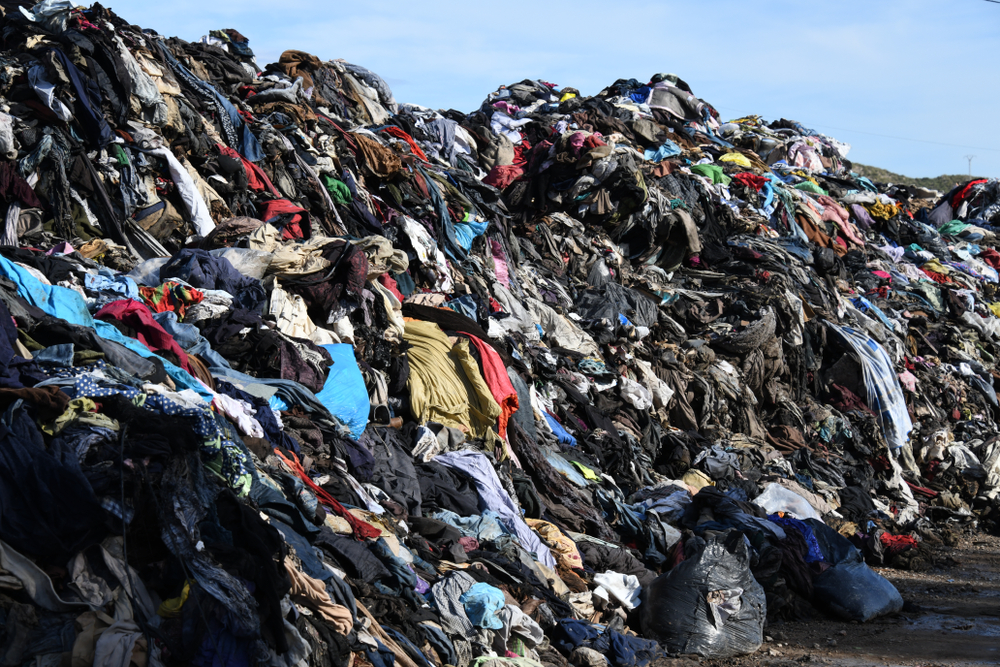Sustainability In The Fashion Industry
Sep 08, 2021 | Kelvin Yaghoubi
 The fashion industry is one of lucrative and excessive production in the 21st century. According to the website ‘The World Counts’, 27 million tonnes of cotton are produced each year, which is ‘the same as 27 t-shirts for everyone on Earth’ . The numbers involved here in this particular industry are worrying in terms of sustainability.
The fashion industry is one of lucrative and excessive production in the 21st century. According to the website ‘The World Counts’, 27 million tonnes of cotton are produced each year, which is ‘the same as 27 t-shirts for everyone on Earth’ . The numbers involved here in this particular industry are worrying in terms of sustainability. If we look at a piece done by the Financial Times on the topic, they state that ‘less than 1% of recycled textiles are converted into new wearable materials’[1].

This
statistic spells worry for the future of sustainability in regards to the
fashion industry, but it isn’t all doom and gloom.
In the same piece done by The Financial Times, we are introduced to Martin
Drake-Knight, co-founder of Teemill. Teemill is an online platform which helps
designers make their own t-shirts and they print them out and ship them in
bulk, having shipped 1 million t-shirts back in 2018 alone.
Teemill are a company that prioritise sustainability in the fashion industry, and by acting as the production company behind millions of t-shirts a year, they hope to cut out the excess fat and waste that comes with clothes production.
Martin Drake-Knight states that ‘one of the big problems with the fashion industry is over-production’ and companies like Teemill aim to tackle this major contributor to waste in the world. Teemill estimates that using sustainable materials adds about 25% to the cost. Drake however says that it ‘may cost more money, but we save money in other areas’. The Teemill factory is powered completely by renewable energy and not only that, but the company saves a tonne more money compared to the average non-sustainable clothing company, due to the simple fact that Teemill produce a t-shirt directly after being asked to make one by a customer.
In other words, Teemill do not over-produce clothing items. Therefore they are saving a lot of money, and also helping save the environment by cutting out over-production and only making what is absolutely necessary.

Teemill’s
main stroke of genius lies in their ‘Barcode’ system. Every Teemill t-shirt
comes equipped with a barcode, which customers can scan when they feel they
have outgrown the item, or when the tee has simply had its day. The barcode
scan allows the buyer to send the t-shirt back for free with free postage and
shipping, and it also grants them a discount on their next purchase from the
company.
This
is a smart move on Teemill’s part, really helping to promote sustainability in
the fashion industry. This is not only through the circular idea itself, but
also by incentivising the consumer to come back and use their business model
for personal gain, and promoting sustainability from buyer to producer.
Malin
Viola Wennberg gave a TED Talk in 2019 on the topic of ‘a future sustainable
fashion system’. In it she states that ‘80% of a garment’s climate impact
happens before it ends up on a rack’[3]. In other words it is the
production process of clothing that is marring the sustainability of the
fashion industry.
It
seems as though, due to the nature of production being the main antagonist to
sustainability in the fashion industry, we as consumers and buyers can’t do
much to help solve the problem. But Wennberg disagrees. She states that ‘the
first thing we can do is attempt to prolong the active lifetime of a garment’.
For example we ‘use a t-shirt an average of 30 times, what if we used it twice
as much?’.
She
then goes on to say that you can take it ‘a step further’ by essentially
‘renting’ clothing, creating a circular chain of sustainability in which one
piece of clothing has multiple users and reduces over-production. She mentions
that if the place you were renting from used only renewable energy too (similar
to Teemill) we would be decreasing ‘the climate impact by 67%’.
It’s
clear from this then that companies like Teemill really are helping contribute
to sustainability in the fashion industry, but Wennberg does also warn that
so-called ‘sustainable fibres’ used in making sustainable clothing are not
always as sustainable as advertised. She makes the point of organic cotton, and
how in concept it sounds sustainable, but if the factory it’s being processed
in uses bleaches and is coal-powered then ultimately it isn’t quite as
sustainable as we once thought. If we want non-toxic clothing we must ‘stay
away from conventional cotton, as they use a lot of harmful pesticides’.
In
conclusion, in order to create a more sustainable fashion industry model, we
must focus heavily on the production side of things. This is the only way to achieve
true sustainability, for the betterment of the environment, and for all the
generations to come.
[1] https://www.youtube.com/watch?v=y78UVWd5PHE&ab_channel=FinancialTimes
Recommended








